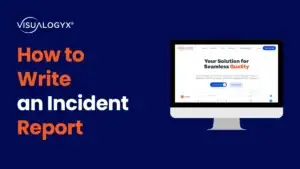Introduction
Fire extinguishers are one of the first lines of defense in the event of a fire—and their reliability can be the difference between a manageable incident and a devastating emergency. But simply having a fire extinguisher on-site isn’t enough. Regular inspections are essential to ensure each unit is fully charged, easily accessible, and ready to use at a moment’s notice.
In fact, studies show that nearly 60% of fires that escalate out of control could have been contained if a fire extinguisher had been used promptly and effectively. That’s why both monthly visual checks and annual professional inspections are not just recommended—they’re required by safety regulations. In this guide, you’ll learn how often fire extinguishers should be checked, what each inspection involves, and key compliance tips based on NFPA and OSHA standards. Whether you manage a business or facility, staying on top of inspections is crucial for safety and legal compliance. Let’s get started.
Importance of Fire Extinguisher Inspection
Routine fire extinguisher inspections are essential for several reasons:
- Compliance with Regulations: Most jurisdictions mandate regular fire extinguisher checks to comply with safety standards and regulations. Missing inspections can result in fines or legal consequences.
- Ensuring Functionality: Inspections ensure the extinguisher is in good condition and will function as needed in an emergency, avoiding potential failures.
- Saving Lives and Reducing Property Damage: A well-maintained fire extinguisher can significantly reduce the risk of injury or death and minimize property loss in case of a fire.
- Proactive Problem Detection: Fire extinguisher inspections help detect issues like low pressure, corrosion, or tampered seals early on, allowing for timely repairs or replacements.
The process of fire extinguishers inspection is not just about meeting standards; it’s about protecting people and assets from potential hazards.
How Often Should Fire Extinguishers Be Checked?
Having a fire extinguisher isn’t enough—it needs regular inspections to ensure it works when it matters most. Monthly visual checks, annual professional inspections, and periodic internal maintenance (every 5–12 years) are all essential. This guide breaks down how often each type of inspection should be done to keep your extinguishers effective and compliant.
| Inspection Type | Frequency | Performed By | Purpose |
|---|---|---|---|
| Visual Inspection | Monthly | Facility staff | Ensure accessibility, proper pressure, and no damage |
| Maintenance Inspection | Annually | Certified technician | Comprehensive check of all components |
| Internal Maintenance | Every 5–6 years (varies) | Certified technician | Disassemble and inspect internal parts |
| Hydrostatic Testing | Every 5–12 years (varies) | Certified technician | Pressure test to ensure structural integrity |
Fire extinguishers should be checked at varying intervals, depending on the type of inspection. Here’s how often each inspection should occur:
Monthly Visual Inspections (Every 30 Days)
Purpose: Quick, non-technical checks to catch visible issues and confirm accessibility.
Who Should Do It: Any designated individual (does not require certification).
What to Check:
- The extinguisher is in its designated location.
- It’s easily accessible and unobstructed.
- The pressure gauge is in the green (operational) zone.
- The pull pin is intact and the tamper seal is unbroken.
- No visible damage, corrosion, leaks, or clogging.
- The instruction label is legible and facing outward.
- The inspection tag is updated with date and initials.
Why It Matters: Monthly checks are your first line of defense. Even a small obstruction or low pressure can render an extinguisher useless in an emergency.
Annual Maintenance Inspections (Every 12 Months)
Purpose: A certified technician performs a thorough examination of the extinguisher’s components and readiness.
Who Should Do It: A qualified fire safety professional.
What’s Done:
- Weighing the extinguisher to verify content levels.
- Checking hose, nozzle, and seals for deterioration or blockage.
- Inspecting mechanical parts and expelling systems.
- Confirming pressure and operational readiness.
- Documenting the inspection in compliance with OSHA standards.
Compliance Tip: This annual inspection must be recorded on a tag or label attached to the extinguisher.
Six-Year Internal Maintenance (For Stored-Pressure Dry Chemical Extinguishers)
Frequency: Every 6 years
Purpose: A deep internal check ensures that the extinguishing agent and components are functioning properly and are not degraded over time.
Involves:
- Complete discharge of the unit.
- Internal examination of cylinder and components.
- Replacement or recharging of the extinguishing agent.
- Re-pressurizing and sealing.
Applies To: ABC-type stored-pressure dry chemical extinguishers.
Hydrostatic Testing (Every 5–12 Years)
Purpose: Verifies the structural integrity of the extinguisher cylinder under high pressure.
Frequency (based on type):
- Every 5 years:
- Carbon dioxide (CO₂) extinguishers
- Wet chemical extinguishers
- Water-based and foam extinguishers
- Every 12 years:
- Dry chemical extinguishers (ABC)
Conducted By: Certified professionals using pressurized water or gas to test the cylinder.
Why It’s Important: Corroded or weakened cylinders can rupture under pressure. Hydrostatic testing ensures safety and regulatory compliance.
Conducting regular fire extinguisher checks is crucial for ensuring optimal performance in case of an emergency. The time intervals are important to keep in mind, as missing an inspection can lead to unpreparedness during a fire incident. For comprehensive fire safety coverage, make sure to integrate fire extinguisher maintenance with general fire safety inspections.
Key Considerations for Fire Extinguisher Maintenance
1. Inspection Frequency
Fire extinguishers must undergo monthly visual inspections to identify obvious damage, ensure accessibility, and confirm adequate pressure. In addition, annual maintenance inspections by certified professionals are required to verify the extinguisher’s internal integrity and operational readiness, in line with NFPA and OSHA regulations.
2. Label and Tag Visibility
All instructional labels and inspection tags must remain clearly legible and unobstructed. These identifiers provide essential usage guidance and serve as documented proof of compliance with inspection schedules. Faded, torn, or missing tags should be replaced immediately.
3. Operational Safety
Functional fire extinguishers are a critical component of any fire safety plan. Ensuring each unit is fully charged, damage-free, and easily accessible significantly improves the ability to respond effectively in the event of a fire emergency. Routine inspections help mitigate risk and protect lives and property.
The Different Types of Fire Extinguisher Inspections
Understanding the types of fire extinguisher inspections can help in executing the correct procedures for different scenarios. These include visual inspections, maintenance inspections, and internal maintenance inspections.
1. Visual Fire Extinguisher Inspections
Visual inspections are the first line of defense. They involve a quick check to ensure the fire extinguisher is where it should be, is fully charged, and shows no visible damage.
- Inspect for Blockages: Make sure the hose or nozzle is not obstructed.
- Pressure Gauge Check: Confirm the needle is in the green zone, indicating adequate pressure.
- Physical Damage: Check for signs of corrosion, dents, or leaks.
Visual inspections should be documented regularly to create a history of fire extinguishers inspection, demonstrating compliance with safety standards.
2. Maintenance Inspections
These inspections are more in-depth than visual checks and should be conducted at least once a year by a certified professional.
- Pressure Testing: Verify that the extinguisher’s pressure meets the manufacturer’s guidelines.
- Weighing the Extinguisher: Ensure the extinguisher is within the recommended weight range, indicating it is still full.
- Safety Pin and Seal Check: Verify the safety pin is intact and that the tamper seal is not broken.
Maintenance inspections help in identifying any issues that may not be evident during visual inspections. This is where portable fire extinguishers often require additional servicing, such as refilling or replacing certain components.
3. Internal Maintenance Inspections
Performed at longer intervals (every 5-6 years), internal maintenance inspections involve dismantling the extinguisher to inspect internal parts and perform hydrostatic testing.
- Hydrostatic Testing: Tests the cylinder for strength and leaks by filling it with water and pressurizing it.
- Internal Cleaning: Ensure the inside of the cylinder is free from sediment or corrosion.
- Recharging: After the inspection, the extinguisher must be recharged if it has been used.
Annual fire extinguisher inspection and internal maintenance are critical for ensuring long-term reliability. Combining these with regular visual and maintenance checks enhances the overall safety of your premises.
Fire Extinguisher Inspection Checklist
Creating a fire extinguisher inspection checklist helps ensure no details are overlooked during inspections. The checklist should include:
- Location verification
- Accessibility check
- Pressure gauge inspection
- Safety pin and seal status
- Physical appearance check (corrosion, leaks, dents)
- Documentation of the inspection date
Using a fire extinguisher inspection checklist template can streamline the inspection process and help maintain consistency across multiple locations.
Annual Fire Extinguisher Maintenance and Risk Assessments
Annual maintenance is not just a recommendation; it is often a legal requirement. It involves inspecting, servicing, and testing the extinguisher to guarantee that it will function properly when needed.
- Annual fire extinguisher maintenance includes refilling and replacement of worn components.
- Conducting fire extinguisher risk assessments helps identify potential hazards and determine if additional extinguishers or different types are necessary.
- Risk assessments also contribute to optimizing the placement of fire extinguishers based on the unique fire risks of each area.
Fire Safety Inspections and Their Impact
Fire safety inspections encompass more than just fire extinguishers. They also include checking fire alarms, emergency exits, and other fire safety equipment.
- Inspections ensure all fire safety protocols are up to date and properly implemented.
- Regular fire safety inspections can identify potential issues before they become significant problems, contributing to a safer work or home environment.
- Ensuring that all fire safety equipment is in optimal condition not only complies with regulations but also provides peace of mind.

Conclusion
Regular fire extinguisher inspections are crucial for maintaining safety and complying with fire safety regulations. Following the recommended inspection intervals for visual, maintenance, and internal inspections ensures that fire extinguishers will function when needed. Developing a routine for conducting fire extinguisher checks and utilizing tools like inspection checklists can help maintain a secure environment.
Implementing a comprehensive fire safety program that includes regular inspections and risk assessments can be the difference between minor damage and a major disaster.




